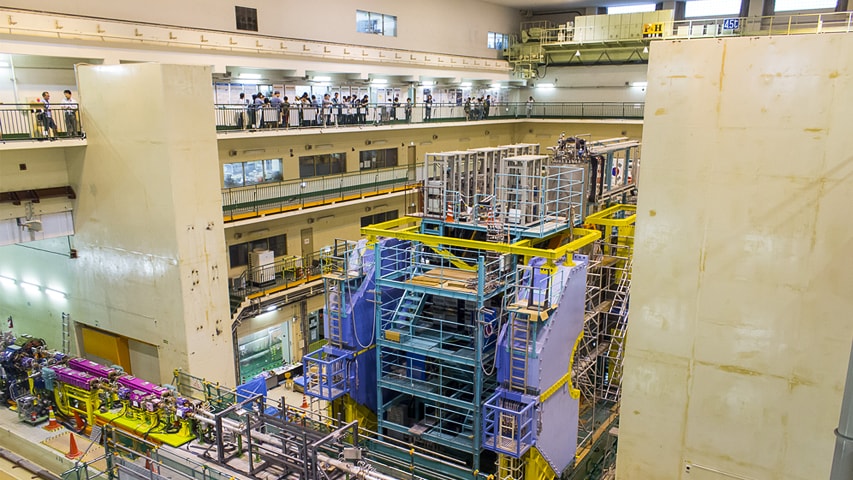CMU Researchers Aid in Japan's Search for Anti-matter
Jocelyn Duffy, jhduffy@andrew.cmu.edu, 412-268-9982

View of the SuperKEKB collision point in late 2015. The accelerator beam line is now covered with a concrete shield. The Belle II detector can be seen in the background.
The hunt to solve an anti-matter mystery may have new clues, thanks to an upgrade of the SuperKEKB, an electron-positron colliding accelerator at the High Energy Accelerator Research Organization (KEK) in Japan.
Test operations started earlier this year, and Carnegie Mellon University Physics Professor Roy Briere has been a member of KEK's Belle II collaboration since 2013.
When fully operational, the rate of collisions produced by SuperKEKB will be several tens of times larger than that of its predecessor, KEKB.
"By producing collisions with much higher intensity, we hope to accumulate 50 times more data. And that means our measurements are going to be very precise," Briere said.
Scientists will use the collision data to pursue the mystery of the disappearance of anti-matter during the early, developmental processes of the universe, and to discover and clarify new physical laws that go beyond the Standard Model of particle physics.
"When you have 50 times the data, you can test things much more accurately and try to find the little chink in the Standard Model's armor, so to speak," Briere said.
The Belle II collaboration, named after the collider's detector, is an international research organization hosted by KEK's Institute of Particle and Nuclear Studies. The group is assembling the Belle II detector, which will gather data at the point where the beams of electrons and positrons smash into each other. Briere and postdoctoral researcher Jake Bennett are working on the software infrastructure needed to calibrate one portion of the massive detector.
While SuperKEKB and Belle II physicists continue to optimize the collider and the detector, Briere also is working with members of the collaboration to anticipate what they may see when the collider records its first collisions and how to plan their analyses accordingly. Briere assisted Professor Vladimir Savinov and colleagues at the University of Pittsburgh in organizing a conference in May, which brought together theorists and experimentalists for workshops on this topic.
Briere also is a member of the BESIII experiment at the BEPCII collider in Beijing, and was a member and former co-spokesperson for the CLEO detector collaboration at Cornell University.
Related: